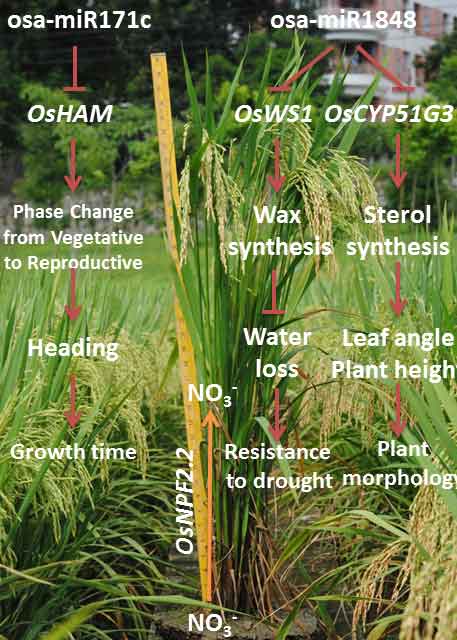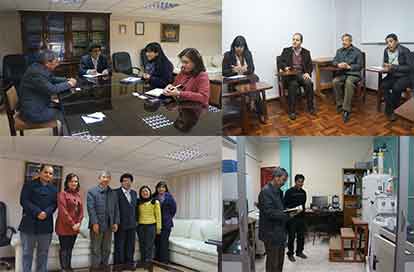News
-
2015-07-28Agreements signing with Germany, Bolivia and VietnamSCBG signed cooperation agreements with Bolivia University of San Andres(UMSA), Institute of Ecology and Biological Resources, Vietnam Academy of Sciences and Technology, and Germany University of Wuerzburg in June,2015.Read More
-
2015-06-19Identification of four genes related with agronomic traits of riceRice is one of important crops and a model plant for molecular biology. Growth period, nutrition utilization efficiency, stress resistance and ideal plant type are important agronomic traits.Read More
Recently, South China Botanical Garden, Chinese Academy of Sciences, identified four rice genes, which affect above agronomic traits. Li et al found th... -
2015-06-17SCBG Delegation visit BoliviaSCBG delegation led by Director-general, Prof. Huang Hongwen visited University of San Andres (UMSA) in La Paz for scientific cooperation and exchange at the first time from May 24 to 29,2015.Read More
During the visit, SCBG and UMSA discussed the future cooperation such as flora of Bolivia, biodiversity conservation especially for rare and endanger... -
2015-06-04New development on Nitrogen saturation hypothesisNitrogen (N) saturation hypothesis suggest that when an ecosystem reaches N-saturation, continued N input will cause increased N leaching, nitrous oxide (N2O) emission, and N mineralization and nitrification rates. It also suggests that a different element will become the main limiting factor when N saturation has been reached. Although this hyp...Read More
-
2015-05-28SCBG-UNMSM Lab Agreement Signing CeremonyOn May 22, Agreement on the Creation of the SCBG - UNMSM Laboratory for Molecular Systematics and Evolution was signed between South China Botanic Garden(SCBG), Chinese Academy of Sciences and Universidad Nacional Mayor de San Marcos (UNMSM) in President Office in Lima.Read More
Chinese Premier Li Keqiang and Peruvian President Ollanta Moisés Humala... -
2015-04-27Delegation of Christchurch visit South China Botanical GardenOn April 2, Lianne Dalziel, the Mayor of Christchurch, New Zealand, together with her delegation visited South China Botanical Garden.Read More
Visited the greenhouse of SCBG -
2015-04-27The delegation of Bayreuth University visit South China Botanical Garden,CASFrom March 16 to April 1, the delegation of Bayreuth University visited SCBG for scientific research cooperation and exchange.Read More
SCBG introduction by YU Yan of Cooperation and Exchange Department
Lecture by Professor Sigrid of Bayreuth University
The delegation visit herbarium of SCBG
Field trip in Dinghushan evergreen broad-leaf f... -
2014-05-13China's 19-year City-level Energy-related Carbon Emissions:Characteristics, Driving Forces And Regionalized Mitigation PolicesCarbon dioxide (CO2) emission, responsible for more than 60% of green house effects, was proved to be the leading contributing factor for global warming. China, which has been experiencing a remarkable growth of gross domestic product (GDP), has surpassed the United States and became the largest CO2 emitter, sharing 24.2% of the world's tota...Read More

